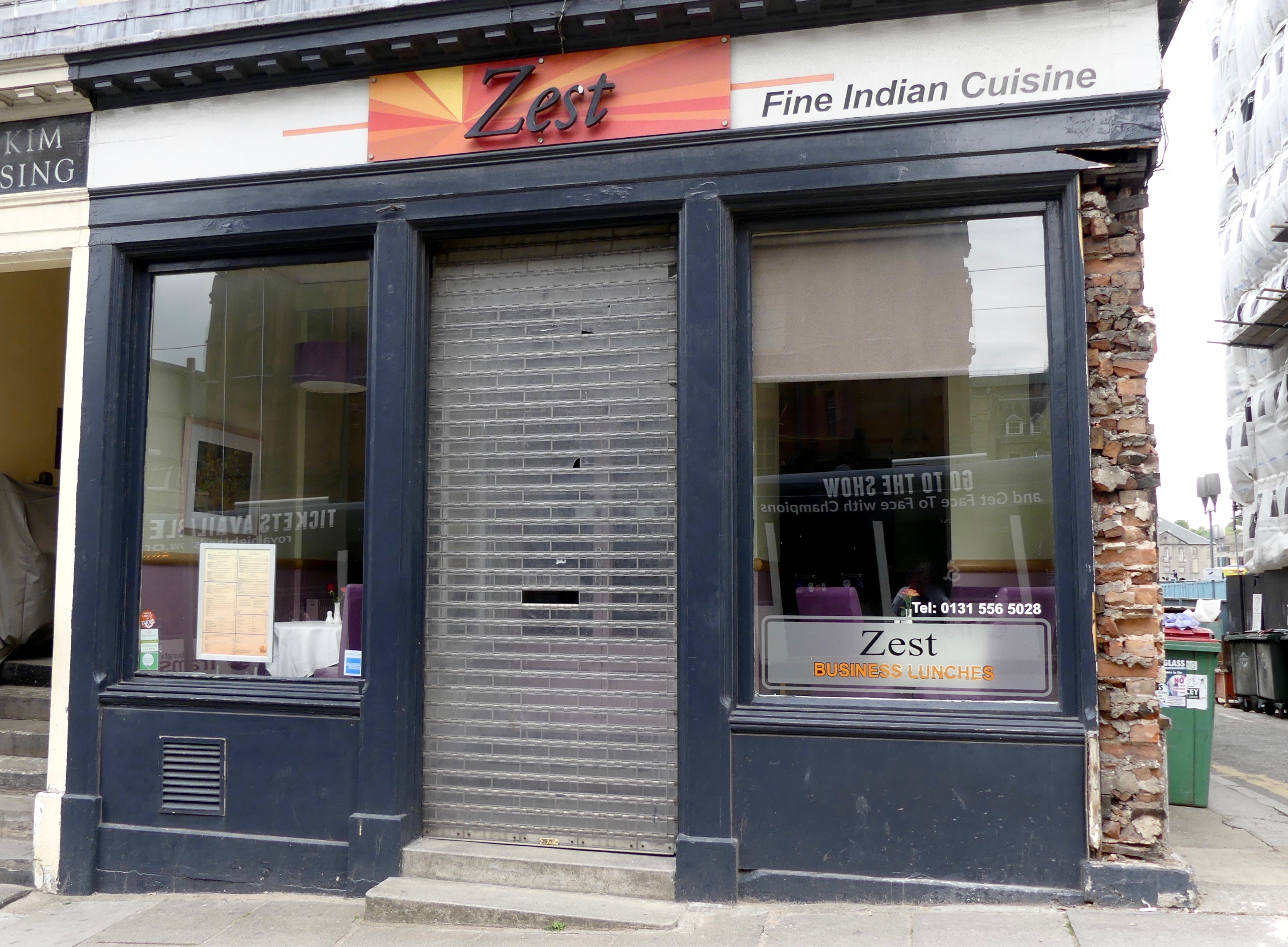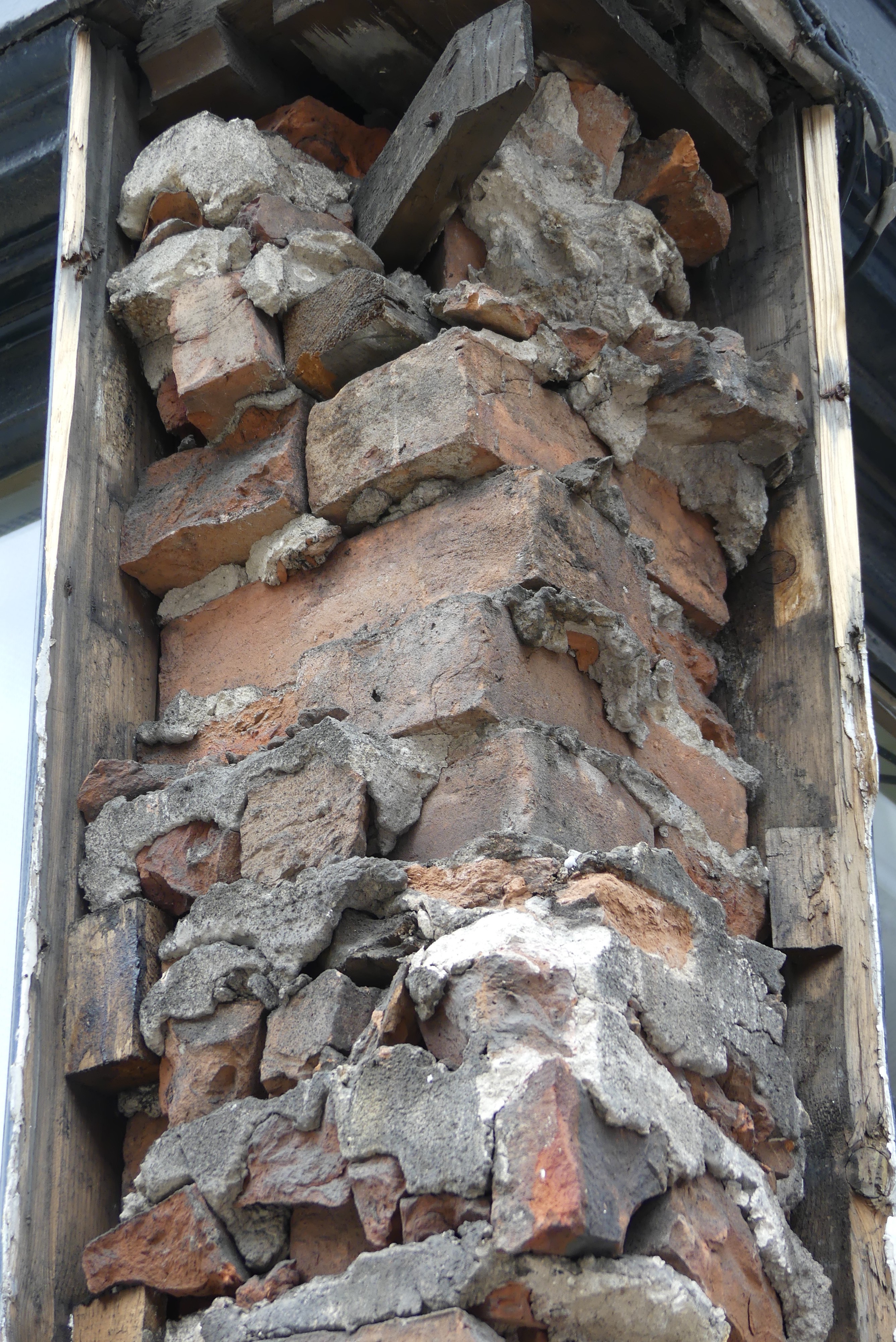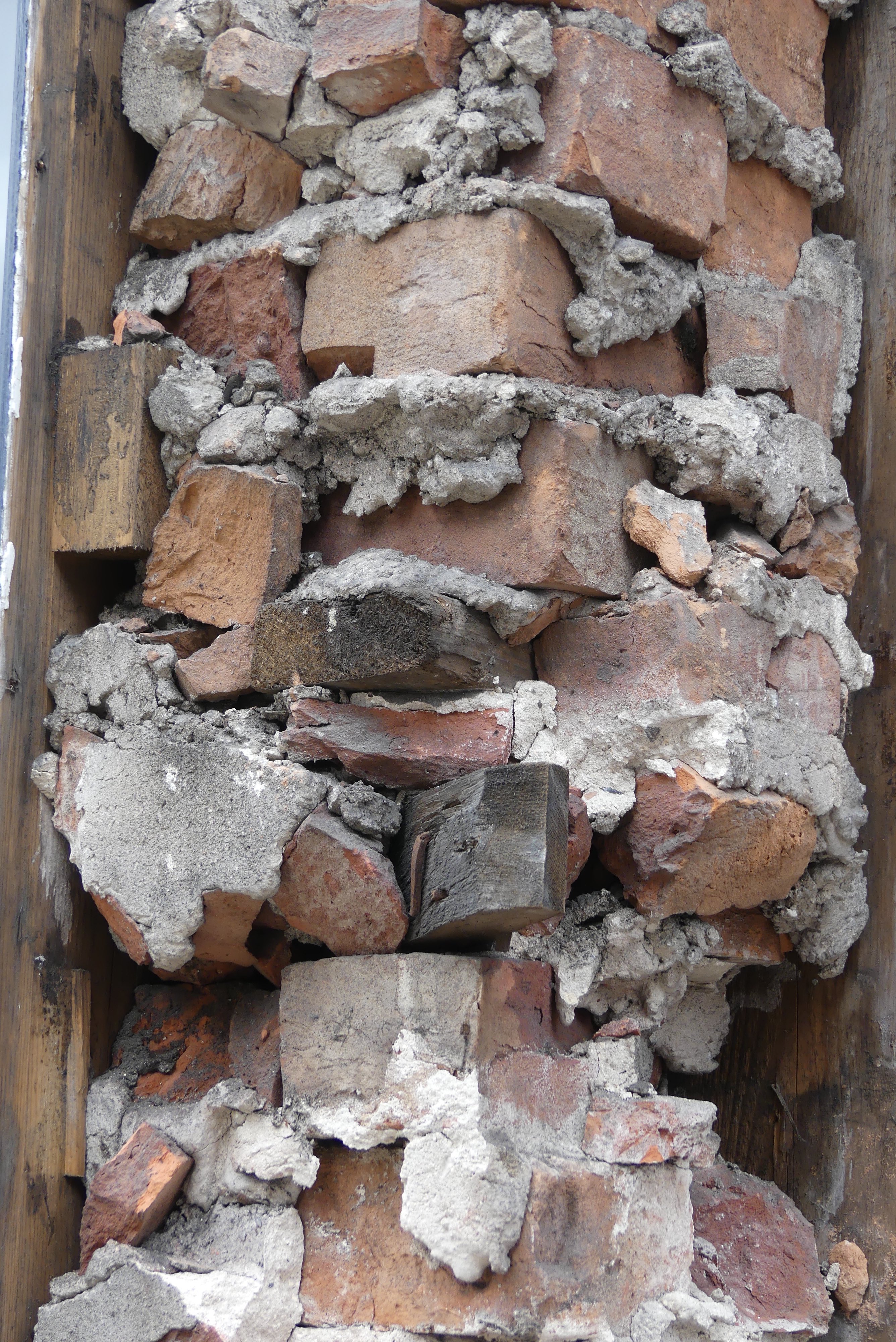
We’ve become wearily accustomed to to HGVs knocking great lumps off properties around Broughton Street Lane.
But a recent low-speed collision on North St Andrew Street takes things to a whole new level.
According to workers on the adjacent building site, a delivery lorry ‘misjudged’ the corner at North Clyde Street Lane and caused extensive damage to a Category A-listed tenement (by David Paton, 1824).
Here’s what it looked like before.

And here’s what it looks like now.

Apparently, the helpful builders offered to fix the problem by ‘sticking a girder in’, but the property owners wisely declined and have contacted their insurance company instead. Thankfully, Zest restaurant remains open.
What interests us, apart from a sense of outrage that this avoidable mishap was allowed to happen in such a sensitive area in the first place, is the seemingly jerry-built quality of the original structure.


The column's interior comprises random-looking bits of brick, mortar and odd pieces of wood. It’s less Edinburgh World Heritage in appearance and more one of those amusing cake-construction bungles from Celebrity Bake Off.
Can anyone in the know tell us whether this is normal for such period buildings?

----------







Dear Spurtle
In response to questions relating to poor quality historic brickwork being revealed following damage at North St Andrew Street … Such jerry-built work is a surprisingly common discovery when investigating historic buildings. The brickwork that you show was clearly built up from the inside and built against the fascia boarding that was ripped off by the vehicle. It was thus never meant to be seen – but that isn’t to excuse the quality, which is obviously lamentable or, at very best, ‘pragmatic’.
As an archaeologist specialising in the study of historic buildings I feel that there should definitely be a sub-discipline of the subject – the archaeology of jerry-building. It’s surprisingly common in old buildings just as shoddy new work is sadly seen so widely today. And one must remember that the majority of historic buildings that had existed in earlier centuries do not survive … and, for obvious reason, particularly those that were badly built. The use of poor materials, DIY disasters and builders cutting corners is no new phenomenon – as revealed by the cut-corner of this building …
Tom Addyman

